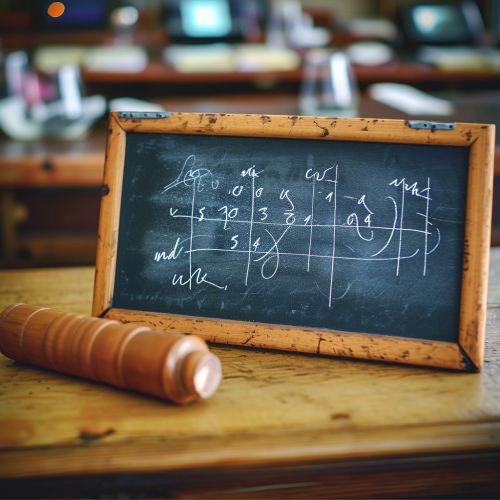Analysis (mathematics)
Introduction
Analysis is a branch of mathematics that deals with the properties of functions and the quantities related to them. It is a broad field that includes calculus, measure theory, differential equations, and more. Analysis is used in many areas of mathematics and its applications, including physics, engineering, and computer science.


History
The history of analysis is intertwined with the history of calculus. The concept of a limit, which is fundamental to calculus, was formalized in the 19th century by mathematicians such as Cauchy and Weierstrass. This led to the development of rigorous foundations for calculus, and eventually to the broader field of analysis.
Branches of Analysis
Analysis can be divided into several branches, each with its own focus and techniques.
Real Analysis
Real analysis is the branch of analysis that deals with real numbers and real-valued functions. It includes the study of limits, continuity, differentiation, and integration. Real analysis is the foundation of many other areas of mathematics, including complex analysis, functional analysis, and probability theory.
Complex Analysis
Complex analysis is the study of complex numbers and functions of a complex variable. It is known for its deep and beautiful results, such as the Cauchy-Riemann equations and the residue theorem. Complex analysis has applications in many areas of mathematics and physics, including quantum mechanics and number theory.
Functional Analysis
Functional analysis is the branch of analysis that deals with spaces of functions. It is a generalization of linear algebra and has many applications in physics and engineering, especially in the study of differential and integral equations.
Other Branches
There are many other branches of analysis, including measure theory, differential equations, harmonic analysis, and non-standard analysis. Each of these branches has its own unique focus and techniques, but they all share the common goal of understanding the properties of functions and the quantities related to them.
Techniques and Concepts
Analysis uses a variety of techniques and concepts to study functions and their properties. Some of the most important are:
Limits and Continuity
The concept of a limit is fundamental to analysis. It is used to define continuity, differentiation, and integration, among other things. A function is said to be continuous if its value changes smoothly, without any jumps or breaks.
Differentiation and Integration
Differentiation and integration are two of the most important operations in analysis. They are used to study the rate of change of functions and the area under curves, respectively.
Series and Sequences
Series and sequences are used to represent and approximate functions. They are especially important in real analysis and complex analysis.
Topology
Topology, the study of the properties of space that are preserved under continuous transformations, plays a crucial role in analysis. It is used to define concepts such as continuity, compactness, and convergence.
Applications
Analysis has many applications in both pure and applied mathematics. It is used in physics to describe the behavior of physical systems, in engineering to design and analyze systems and processes, and in computer science to develop algorithms and data structures. In pure mathematics, analysis is used to prove theorems and solve problems in many different areas, from number theory to geometry.
